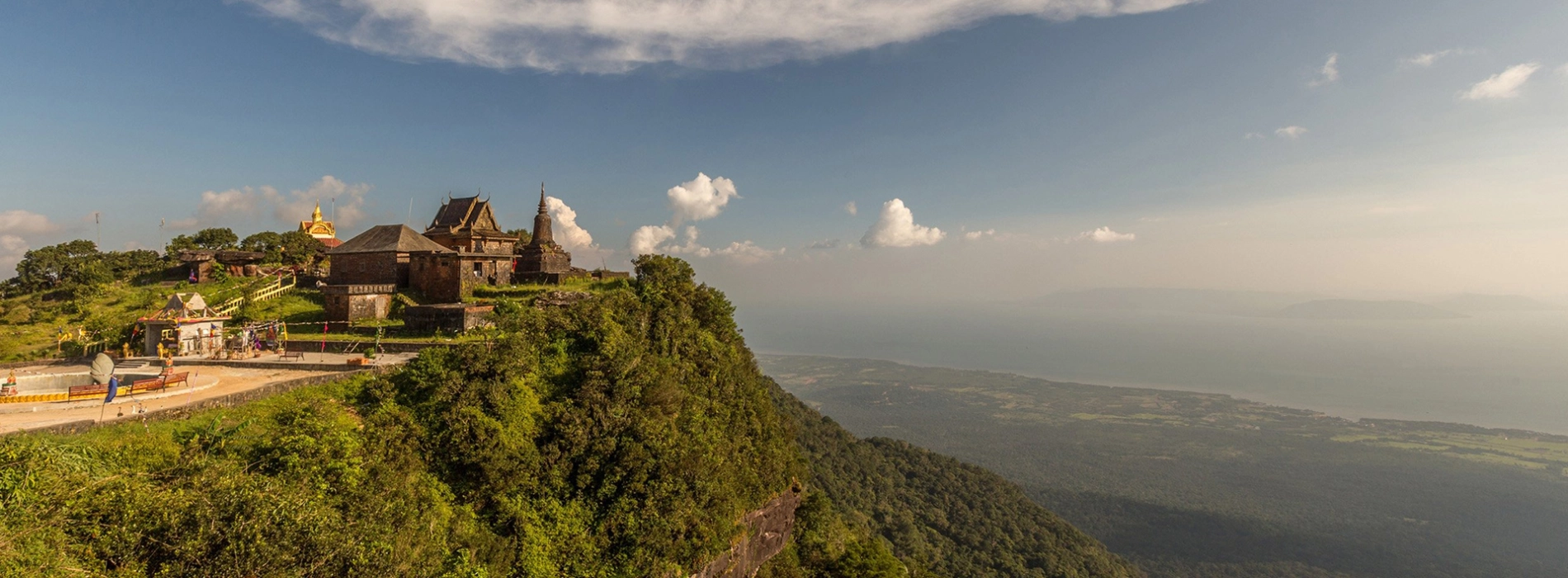
Before embarking on an adventure to Cambodia, it is recommended to learn about the climate and weather of this nation in advance. Knowing the basics would help you plan your trip better, enhancing the experiences for your exploration. Let's get to know Cambodia's climate and weather with Asia King Travel!
Cambodia has a simpler weather system compared to other countries in Southeast Asia. The nation is located in the tropical zone and gets affected by the monsoon winds, which are south-west and east-north monsoons. Therefore, its climate is characterized by a tropical monsoon climate. As a result, the country has distinctive seasons.
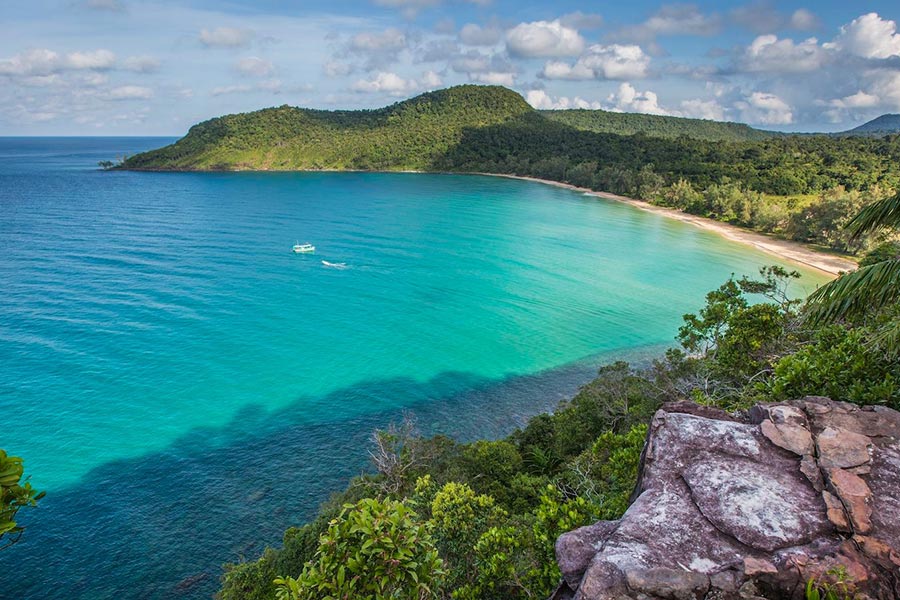
Cambodia is a tropical country
In general, the entire country is subject to the same weather patterns. Average temperatures are relatively uniform across the country. It stays from mid to high, around 27°C (80°F) most of the year. Highlands and mountainous areas experience cooler weather slightly. If you are not a fan of freezing winters, you may love this country. Thanks to the stable and warm temperatures, you can travel in Cambodia at any time of the year.
The tropical monsoon climate has brought Cambodia two distinct seasons, which are rainy and dry seasons.
The rainy seasons in Cambodia last from May to October, when the strong prevailing winds of the southwest monsoon bring heavy rains and high humidity to the land. These months account for almost 75% of Cambodia's yearly rainfall. You should expect the most precipitation during the period from August to October.
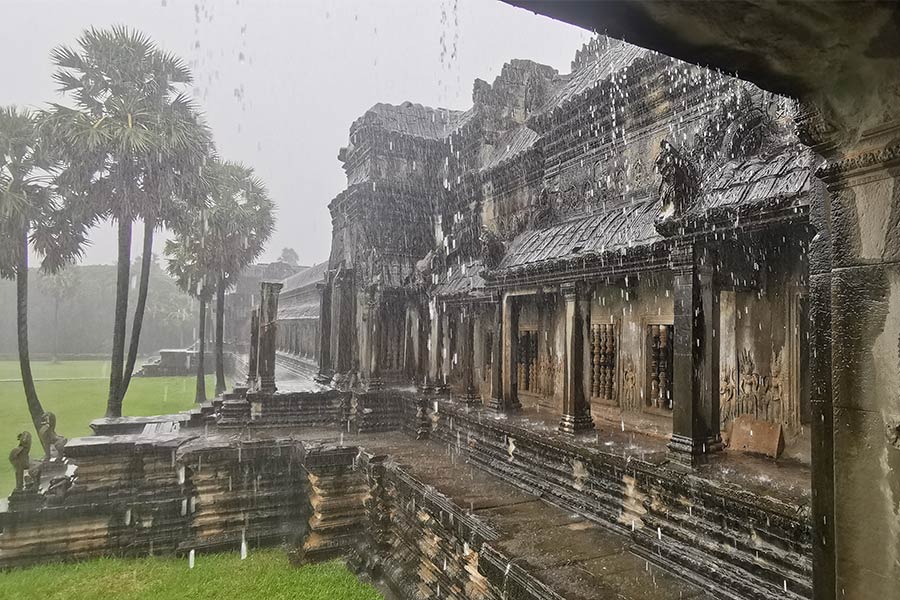
Rainy season brings heavy rains and high humidity to the country
May and July bring extremely hot temperatures and muggy days. The rain comes infrequently, and it is usually in the form of short downpours in the afternoon. The rain does, however, have the advantage of providing some relief from the intense heat. The rain tends to become more consistent and occasionally heavy from late July through October. August through October are when the most precipitation is likely to occur. The temperatures begin to gradually drop, with average highs of about 30 °C (86 °F) and lows of about 23 °C (73 °F).
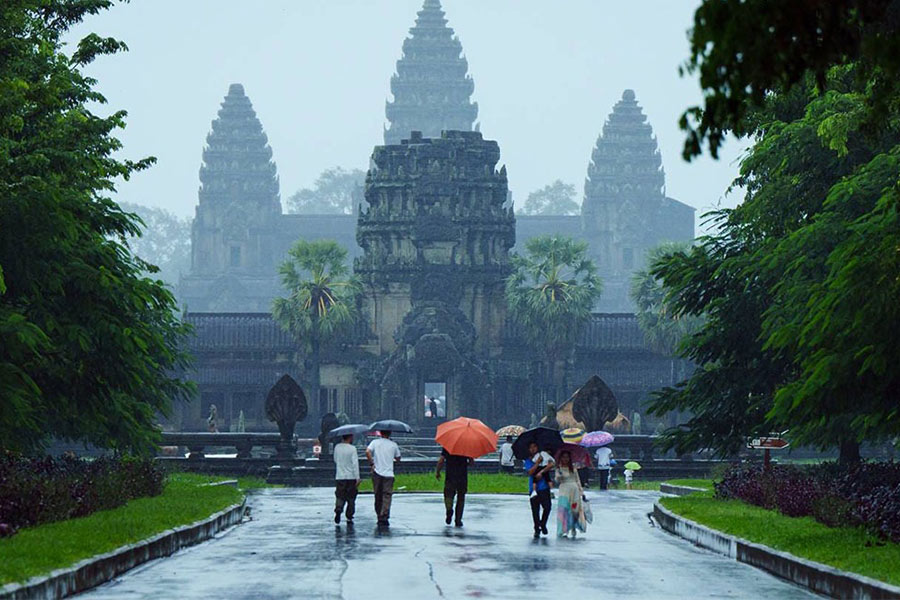
It is advisable to carry rainwear during rainy seasons in Cambodia
These are rather comfortable months to travel, unless you are in a remote area with poor roads. It is advisable to always carry umbrellas and rainwear, such as a raincoat, and choose simple footwear like flip-flops, as you would not want your shoes soaked. These items can be bought easily all over the country at a cheap price.
Cambodia's dry season occurs from November to April, and the country experiences sunny and dry weather. The lighter and drier northeast monsoon arrives, bringing variable cloudiness, infrequent precipitation, and lower humidity. By mid-November, the rains have usually stopped entirely.

Cambodia's weather is pleasant in dry seasons
November through February is a cool period. Average midday temperatures are in the mid-20s °C, with occasional nighttime lows of less than 20 °C. This is the greatest weather of the year in Cambodia, with pleasant temperatures, clear skies, no rain, light breezes, and chilly evenings. Through February, the temperature starts to gradually rise.
.jpg)
This is the busiest time as the number of visitors peaks
The dry season continues from March to early May. Boat and ferry travel is more difficult due to the low river and lake levels. In contrast, road travel is much easier thanks to the lack of rainy season flooding. The temperature slowly rises and peaks in April and May, with midday highs in the mid-30s to 40s. It is less breezy, and the sun can be intense, if not scorching and oppressive. The air becomes still and hazier with the slowly rising humidity as the rainy season approaches.
Each season has its own advantages for traveling. Depending on your preferences, you can consider traveling in dry or rainy seasons as it fits.
The dry season, with low rainfall and pleasant temperatures, is the busiest time in Cambodia when the country has the highest amount of tourist foot traffic. This is the time when travelers can easily engage in many activities, such as trekking, hiking, water sports, experiencing local life, and exploring the culture. Beaches on the south coast are recommended destinations in dry seasons. Travelers also take the time during this period to go to the remote area in the north, as the roads are not ruined by the rains and floods.
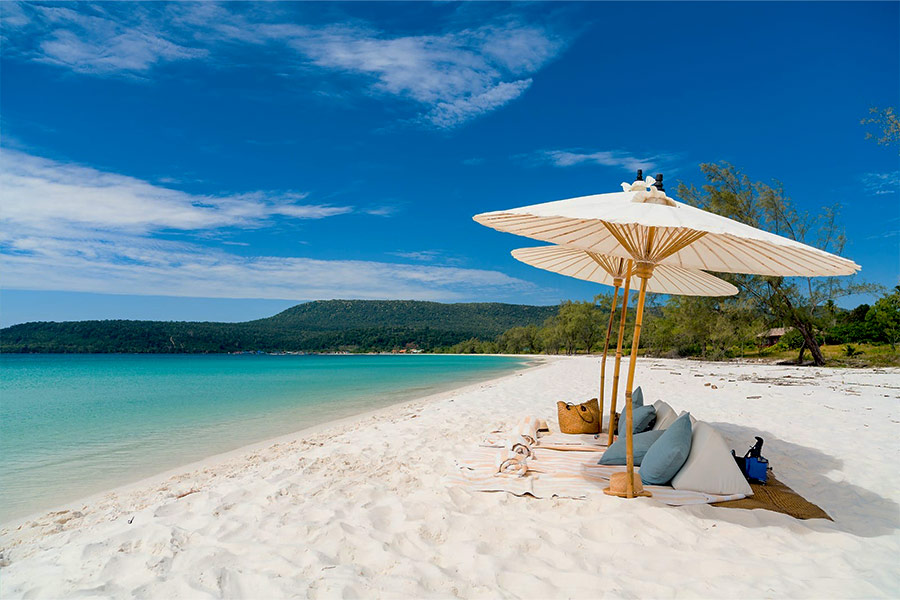
Dry season is the best time to visit beautiful beaches of Cambodia
However, crowds and higher prices are expected at this time of the year. In April and May, the weather is really scorching and intense. During these two months, early morning and late afternoon Angkor Temple tours to avoid the heat are the preference of many tourists. Therefore, if you want to stay dry and don't mind the crowds, November to March is the best season for you to visit Cambodia.
On the other hand, if you find crowds to be bothersome, you might want to go during the rainy season. Traveling in monsoonal Cambodia does have its advantages. The dust and haze are gone, replaced by the return of the lush foliage. Moreover, when the moats are filled to overflowing with water that reflects the shimmering temples in the late afternoon sunlight, Angkor Complex becomes even more stunning. The number of visitors drops, offering opportunities to take images of the temple alone in the absence of people.
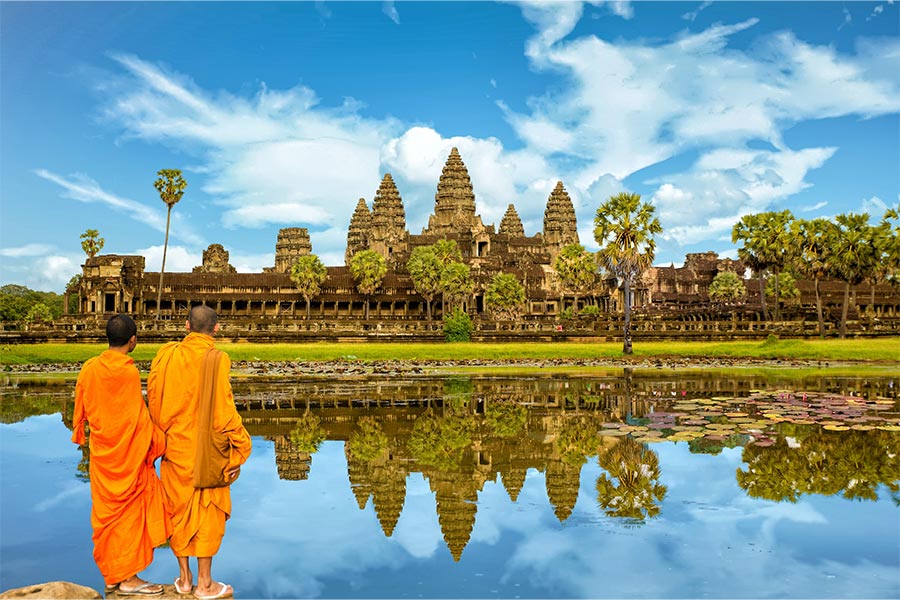
Angkor Complex is more stunning in rainy seasons
In addition, since Tonle Sap Lake expands to a few times its original size during the rainy season, this period is the ideal time of year to explore the flooded forests and floating villages of the lake by boat. Explore the rice paddies and tropical foliage at their most green and lush, which are also great options at this time. So, if you can withstand the rain, it is best to explore Cambodia at the start or end of the rainy season (May–June and October–November), when the rain is not too severe.
The climate of Cambodia not only shapes its diverse ecosystems but also influences the rhythm of daily life. The delicate balance between these climatic extremes plays a pivotal role in shaping the national culture and environment, illustrating the interconnectedness of weather and the country's rich heritage.
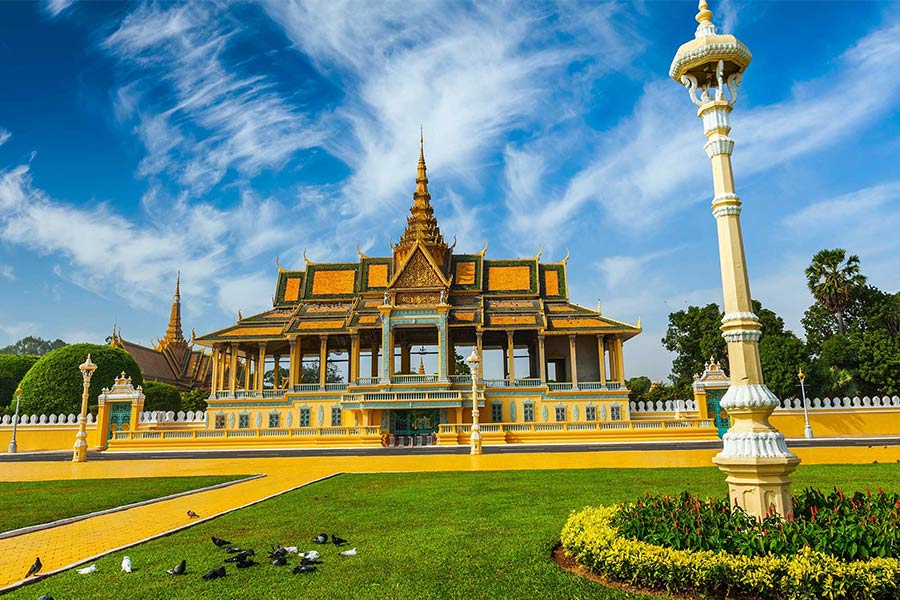
Contact us for more amazing adventures in Cambodia
If you wish for more information about the climate and weather of Cambodia or any other country in Southeast Asia, please don’t hesitate to get in touch with us. We are pleased to help you with any aspects of your trip to these culturally and naturally diverse regions.
Read more: Best time to travel to Cambodia 2025